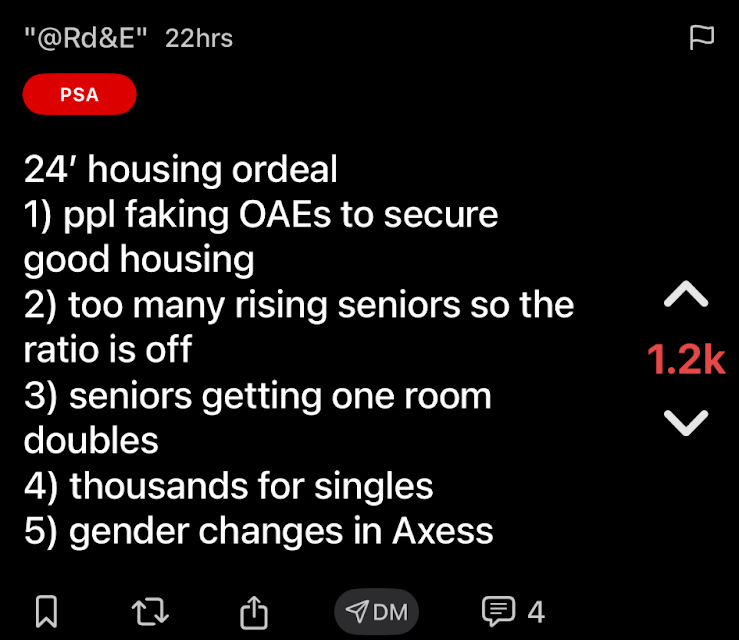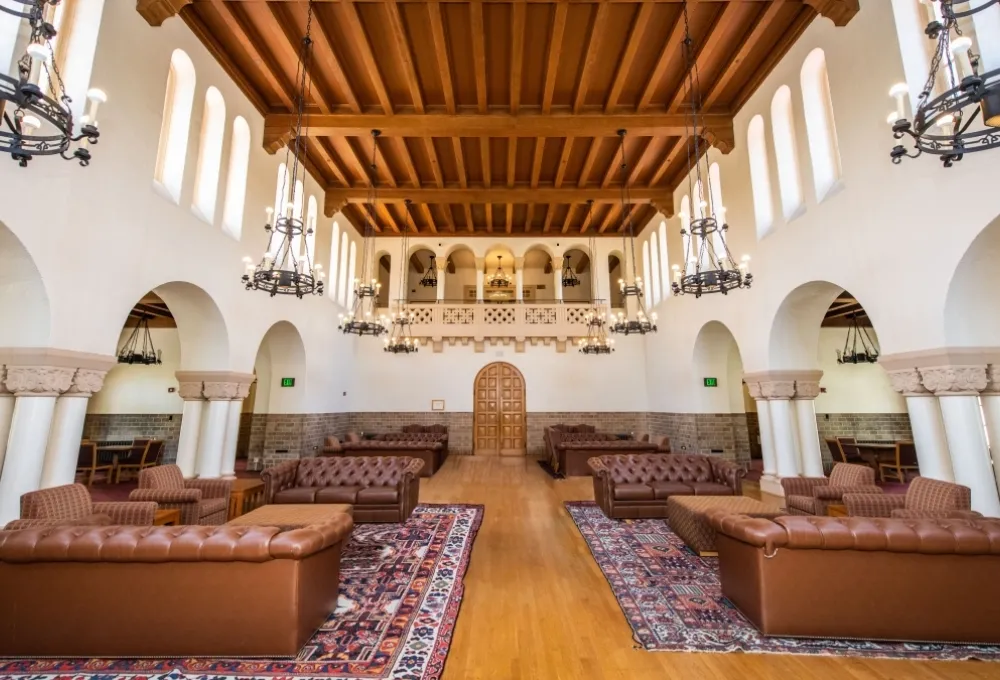Table of Contents
Choosing a room for next year? Then you are likely frustrated with the scarcity of housing options. Who took all the spots? The 36% of students that received room assignments prior to everyone else through the Office of Accessible Education (OAE) housing process. While some may hail this statistic as the result of OAE providing better support for students needing housing accommodation, the more likely explanation is far more cynical: Stanford has allowed students to hijack the OAE housing process, ruining the housing draw.
On the campus social media app Fizz, multiple posts claim there are individuals who obtain fake doctor’s notes of disabilities to obtain better housing options. These claims are supported by the pace at which housing accommodations have proliferated, which is not supported by a corresponding increase in national disability rates. The explosion in housing accommodations at Stanford is dubious, mirrored by the proliferation of accommodations for “disabilities” used on the SAT.

To investigate this system further, we calculated the percentage of the rooms that were filled through the OAE housing process, designed to provide “accommodations in both housing and dining based on medically documented disabilities.”
We compared room availability on the housing portal the day before selection began to the total available space for upperclassmen (excluding freshman dorms and pre-assignment dorms and accounting for 75% of the capacity of four-class dorms). We found that 36% of the housing capacity has been filled through the OAE process. Since every person with OAE housing accommodation can form a draw group of up to four people with whom they get assigned priority housing through the OAE process, our results suggest that at a minimum, 9% of undergraduates have registered with the OAE for housing accommodations.
That is a significant increase from the 5.6% that registered in 2016-2017. The real number of people registered is likely much higher (e.g. there are more than one person with OAE in each group). However, it is absurd that the system—which once only had 5.6% registered with accommodations in 2016-2017—now allows more than one third of the undergraduates on campus to get priority housing selection.
A viral Fizz post claimed that 64% of spots in row houses are taken up by those with OAE accommodations. OAE accommodations are meant to overcome barriers for students—not game the system to secure the most coveted housing on campus.
Despite this increase in users, the OAE fails to support students with real accommodation needs. At the end of spring quarter, a student who requested anonymity got an unexpected emergency surgery, which made it difficult for him to move out. However, the student was staying on campus during the summer, and luckily his room was available for summer housing.
The student applied to the OAE in order to receive a simple accommodation to stay in his dorm room over the summer. However, the OAE office rejected the student with the pretext that his temporary disability was not a “barrier” preventing him from moving out and that he could find an alternative solution. This case makes us wonder what type of support OAE actually provides for students, and what the “barriers” are for participating in this housing process.
The draw groups for OAE students are especially contrary to a fair housing selection process. They are unfair to the students participating in the normal housing draw, as people without any need for special housing get priority just for being in a group with a person with a disability. This absurd feature encourages gaming of the system where one person can acquire fake accommodations to secure better housing for themselves and their friends. It also makes it more difficult for other people with disabilities to receive their most optimal housing choices, as non-OAE registered students take away possible spots in dorms to which they could have otherwise been assigned.
The situation has worsened to the point where RD&E has announced that they “anticipate some students being unassigned after this first round of House and Room Selection,” and that spaces will open up between “now and the second round of assignments in July.” Even after turning most of Toyon into triples and reopening Mirrielees, Stanford’s housing system makes it so that some students, drawing in a group with OAE-registered students, receive their assignments in mid-May. Others are forced to wait until July to choose from the leftover scraps.
To fix the housing system, Stanford RD&E should reduce the size of draw groups to two to prevent abuse of the OAE process. Every person should have a say over who their roommate will be, but anything beyond that is discriminatory to the average Stanford student without housing accommodations or a supposedly disabled friend.
Abuse of the housing accommodations process does the most harm to students with genuine disabilities, yet there exists no mechanism to check the abuse of the OAE process. Further compounding the unfairness and "pay to play" aspect of the housing assignment process is a website where students pay for the privilege of living in a single room by swapping dorms illegally. RD&E is trying to worsen an already terrible housing experience by turning doubles into triples, all while some students use OAE to cheat their way into singles. Administrators must take action to stop cramming students together and build more singles and two-room doubles.
Most importantly, Stanford must crack down on the abuse of accommodations and ensure that the most desirable housing can't be purchased with a doctor's note.





